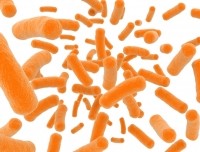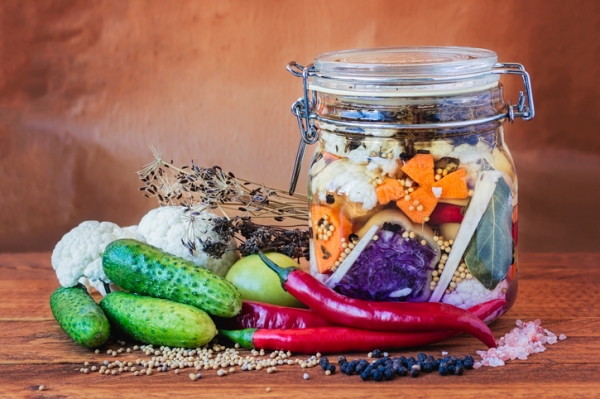ADM talks the evolution of ‘gut health’ and the innovation opportunity in everyday foods

Consumer awareness of ‘gut health’ and its link to overall wellbeing is on the rise. According to figures from Mintel, the number of internet searches for gut health grew 669% last year – and that’s before the COVID-19 pandemic caused a massive jump in interest around foods and ingredients associated with functional health.
Our understanding of the gut microbiome – the microorganisms, bacteria, viruses, protozoa, and fungi, and their collective genetic material present in the gastrointestinal (GI) tract - is evolving to reflect the current state of research in a fast-moving field.
These developments can be characterised as something as a shift in emphasis from ‘digestive health’ to ‘gut health’.
“If you ask 10 different people, what gut health means, you'll probably get 10 different answers. Lots of people may assume that we're talking about digestive health and that will relate to people who have a diagnosis,” Dr Richard Day, Head of Medical Affairs Health & Wellness at ADM, told FoodNavigator.
These diagnosable medical conditions can include irritable bowel syndrome, constipation or inflammatory bowel disease.
“Historically, microbiome research was microbiology effectively, and the microorganisms of the gut were seen to play an important role in the gut and digestive health. If you look at the volume of publications historically they were definitely skewed towards gastrointestinal diagnosis. There are an awful lot of clinical trials and commentaries or review papers looking at how the microorganisms in the gut can be effective in cases of acute gastroenteritis; the prevention of antibiotic associated diarrhoea; and also in the management of irritable bowel syndrome.”
But gut health is coming to mean something ‘much broader’ as the nature of research in the field incorporates scientists with expertise in different disciplines, from data science to physicians.
“Microbiome research today encompasses the kind of global role that the GI tract plays in our overall health or absence of health. Crucially, one of the components here is the microbiome.
“When we're talking about gut health, we're inherently referring to the role of the microbiome in countless physiological processes that then contribute to overall health or wellbeing,” Dr Day explained.
“Over the last decade, there has been this shift towards looking at extra-intestinal diagnoses of things outside of the gut.”
‘An incredible interface between the outside and inside world’
A more nuanced understanding of the gut microbiome and its link to overall health is unlocking insight into positive effects on metabolic biomarkers, from immunity and the nervous system to women’s urinal and vaginal health and mental wellbeing.
“The gut is this incredible interface between the outside world and the inside world. And we have this incredible interaction between the contents of the gut, the microbes, and our immune systems,” Dr Day elaborated.
As the COVID-19 pandemic swept the world, there has been a strong correlation between overall health and recovery in patients – and early evidence suggests the microbiome could play an important role here.
“From the early days of the reporting of COVID-19, there was talk of gastrointestinal symptoms and also changes in the GI microbiome of COVID-19 patients,” Dr Day noted. “There have been a couple of trials and looking at probiotics in COVID-19 and there have been many trials looking at probiotics in the prevention of upper respiratory tract infections.”
And there are lots of implications beyond immunity: “Our immune systems are intrinsically linked to other parts of the body, including the hormone axis. We have this communication going two ways from the gut into the body. The nervous system is intrinsically linked to the gut. There's even a specific gut nervous system called the enteric nervous system.
“What we're seeing now is an explosion of in other fields. The link between the gut and the brain is particularly exciting. We're seeing publications now looking at the role of the gut microbiome in depression and anxiety, bipolar effective disorder, also in neurodegenerative diseases.”
Skin health is another area that resonates. “We’ve seen quite a few publications on this gut/skin axis in recent years and particularly around the more inflammatory skin conditions. One of the long-asserted properties of the microbiome, or indeed microbiome interventions, is that they have this anti-inflammatory effect, which is then seen in the gut skin axis.”
Moving into the mainstream
While the scientific community’s understanding of the microbiome and interventions such as pre- and probiotics is still rapidly developing, consumer awareness of the possibility is nevertheless on the rise.
“There's a big awareness. We are seeing it begin to tip more mainstream everyday,” Dr Day observed.
This is important on two levels. Firstly, it provides brands and innovators with a point of difference, a way to build stronger relationships with their consumer base. Secondly, if gut health products can be delivered in everyday foods that are easily incorporated into people’s lives, this could potentially have a positive impact at a population health level.
“It's not up for debate that consumers are becoming more informed. I used to see this in my own practice with my patients being increasingly better informed. Having individuals engaged with their own health can only be a good thing in terms of driving overall benefits to a population.
“Of course one of the challenges is to make sure that consumers have access to the right information. This is a challenge across the world, not just for microbiome research.
“If we're talking about changing consumer trends and how this can be integrated into daily routines, then fundamentally it does need to be easy in order for consumers to change their behaviours.”
Microbiome interventions and everyday foods
The most tried-and-tested microbiome interventions are prebiotics and probiotics (or ‘strains, cultures or organisms’ as ADM refers to probiotics).
According to the WHO, probiotics are 'live microorganisms which when administered in adequate amounts confer a health benefit on the host'. Prebiotics describe a food component that may provide a health benefit when eaten because of changes it may bring about to the gut bacterial flora.
While there are currently no approved EU health claims on pre- or probiotics (applications to EFSA have been submitted), under EU regulation both terms are considered health claims themselves because ‘anything that states, suggests or implies a relationship between food and health can be considered to be a health claim’.
If microbiome interventions are to be successful, Dr Day stressed regular consumption is the key. “One of the consistent findings is that microbiome interventions tend to have a temporary effect. You are not changing your microbiome forever. And, generally speaking, the advice is that you need to get probiotics on a regular basis to see an effect.
“There needs to be a consideration about setting expectations. Because you can only really expect to see a result if a product is consumed consistently.”
For this reason, food innovators looking to leverage the wellness benefits of microbiome interventions in their formulations need to think about consumption occasion and how the product format fits into people’s daily routines.
“The most important element is consistent consumption by the consumer. I am quite boring and have the same or a similar thing for breakfast every day. And I think that many people eat breakfast cereal the majority of mornings. It’s about finding a way to incorporate a particular microbiome solution that's relevant for you into your routine.”
The challenge of delivery systems in food formats
As it stands, the majority of research into microbiome interventions looks at live microorganisms. That means that it is vital to ensure the microorganisms reach the patient or consumer in the right form, so that it is still viable.
“It's not one of the main challenges, but it is a challenge. And I think that is one of the reasons that the majority of microbiome interventions historically, or even currently, sit within the supplement space. It's important to ensure [the intervention is] given the right conditions to survive, that they get to the consumer as they were in the clinical trials that they were tested in.”
Live microorganisms are present in traditional food products, like yoghurts, kombucha and fermented vegetables. And ‘friendly bacteria’ have frequently been leveraged as an important selling point in the space.
“There's a number of interesting issues around traditional foods. Number one is a certainty or an understanding of what you are consuming. And I think that as a delivery mode, absolutely, this, this is a wonderful thing. People have been enjoying these foods for thousands of years,” Dr Day said.
However, he continued, from his own perspective, if he was ‘specifically consuming something for a health benefit’ he would want to know ‘what's the evidence behind that’? “What guarantees are there that this particular bottle contains the right concentration of the specific strains? I think that there's absolutely no reason why those [traditional] delivery mechanisms can't, or shouldn't, be used [but] I would probably want to just understand a little bit more about what was on offer.”
Back to cereal – or indeed any other shelf stable product – how can these categories integrate live cultures into their formulations?
ADM believes that there is an opportunity in what Dr Day describes as ‘postbiotics’, a rather new term in the ‘-biotics’ field. ‘Postbiotic’ is not currently a recognised term, but ADM is investigating the use of a heat-treated – and therefore dead, but stable – ‘postbiotic’.
“Postbiotics would be much more suitable to the food industry. At ADM we have a heat-treated form of one of our most successful strains, called BPL1.
“Through this heat-treating process, what we have is an inactivated culture, which we refer to as a ‘postbiotic’. This means we don't have the same challenges of ensuring the safe, nice, stable environment for the organism to stay alive. This postbiotic has the flexibility to be incorporated into many food and beverage matrices.”
Importantly, for ‘postbiotics’ to offer a viable option for food innovators, consumption can be linked to observed positive effects on metabolic biomarkers even when inactivated.
A 2018 clinical trial published in the International Journal of Obesity ‘showed some really interesting emerging trends around a number of biomarkers relevant to metabolic health’ linked to the consumption of inactivated ‘postbiotics’, Dr Day elaborated. This included reductions in waist circumference, blood pressure, blood glucose and abdominal visceral fat.
The next step for ADM is to ‘repeat that trial in a bigger population’, to ‘better understand the magnitude of those effects’ and ‘crucially, to try and understand exactly how this happens’.
“If we're giving a heat inactivated microbiome solution, how is that producing metabolites? It's not, obviously, so it must be something about the physical structure of this heat-treated organism."
So, what is a 'healthy' microbiome?
The continually evolving nature of research into microbiome health and the impact of interventions on metabolic markers is both exciting and challenging.
There is not yet a clear understanding of exactly what a 'healthy' microbiome should look like. "We are getting closer to understanding what that is, but we still don't have that exact answer at the moment. The best evidence we have is that a healthy microbiome is a diverse microbiome. And that diversity appears to have a generally protective effect on a number of disease outcomes later in life," Dr Day noted.
“We, as the scientific community, are very much on the journey and we maybe need to get a little bit more road under our feet before we can effectively communicate that with consumers. But we're definitely getting very close.”
Source
'Effects of daily consumption of the probiotic Bifidobacterium animalis subsp. lactis CECT 8145 on anthropometric adiposity biomarkers in abdominally obese subjects: a randomized controlled trial'
International Journal of Obesity
DOI: https://doi.org/10.1038/s41366-018-0220-0
Authors: Anna Pedret1, Rosa M. Valls, Lorena Calderón-Pérez, Elisabet Llauradó, Judit Companys, Laura Pla-Pagà, Ana Moragas, Francisco Martín-Luján, Yolanda Ortega, Montse Giralt, Antoni Caimari1, Empar Chenoll, Salvador Genovés, Patricia Martorell9, Francisco M. Codoñer Daniel Ramón,Lluís Arola1, Rosa Solà
























